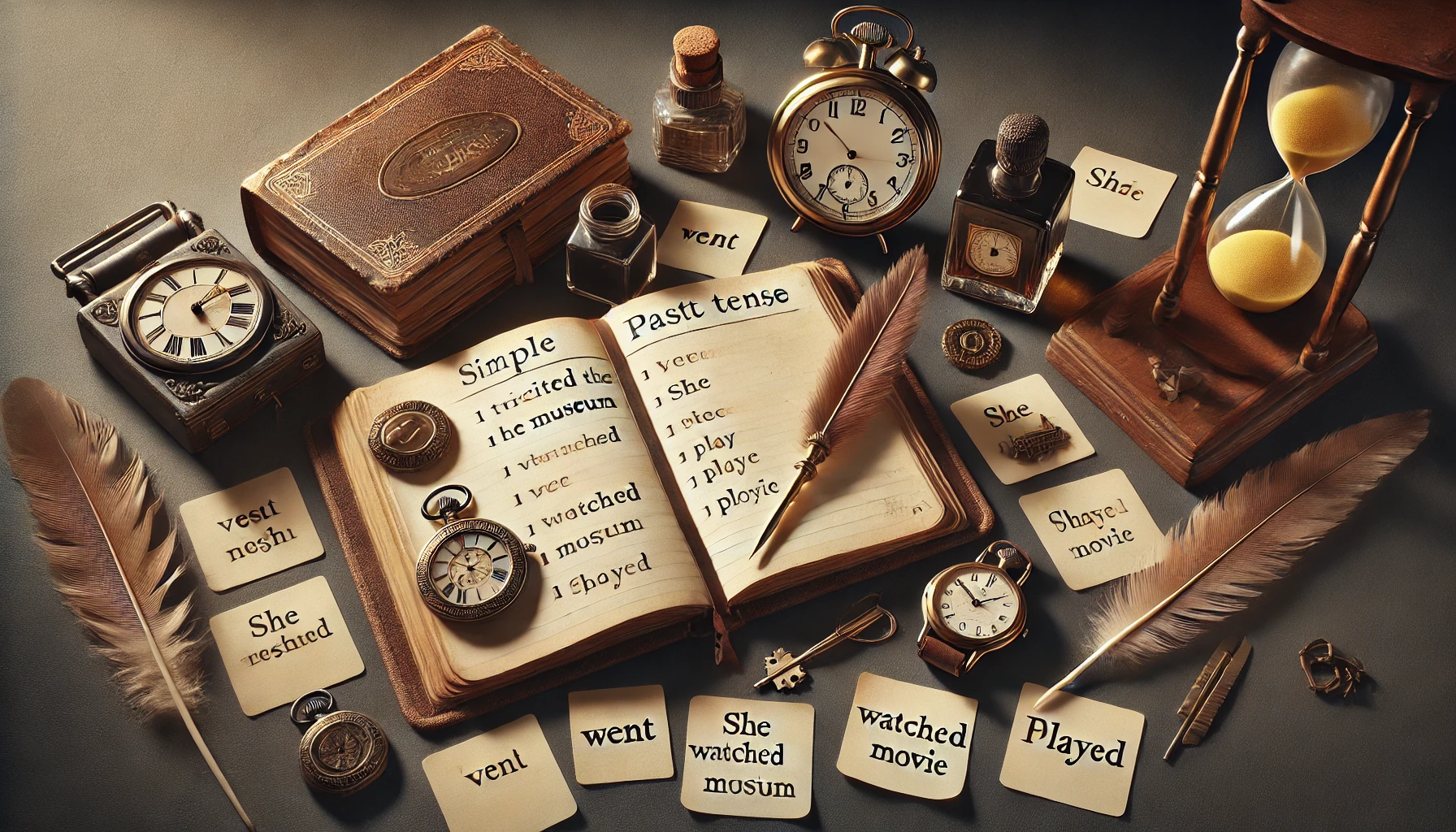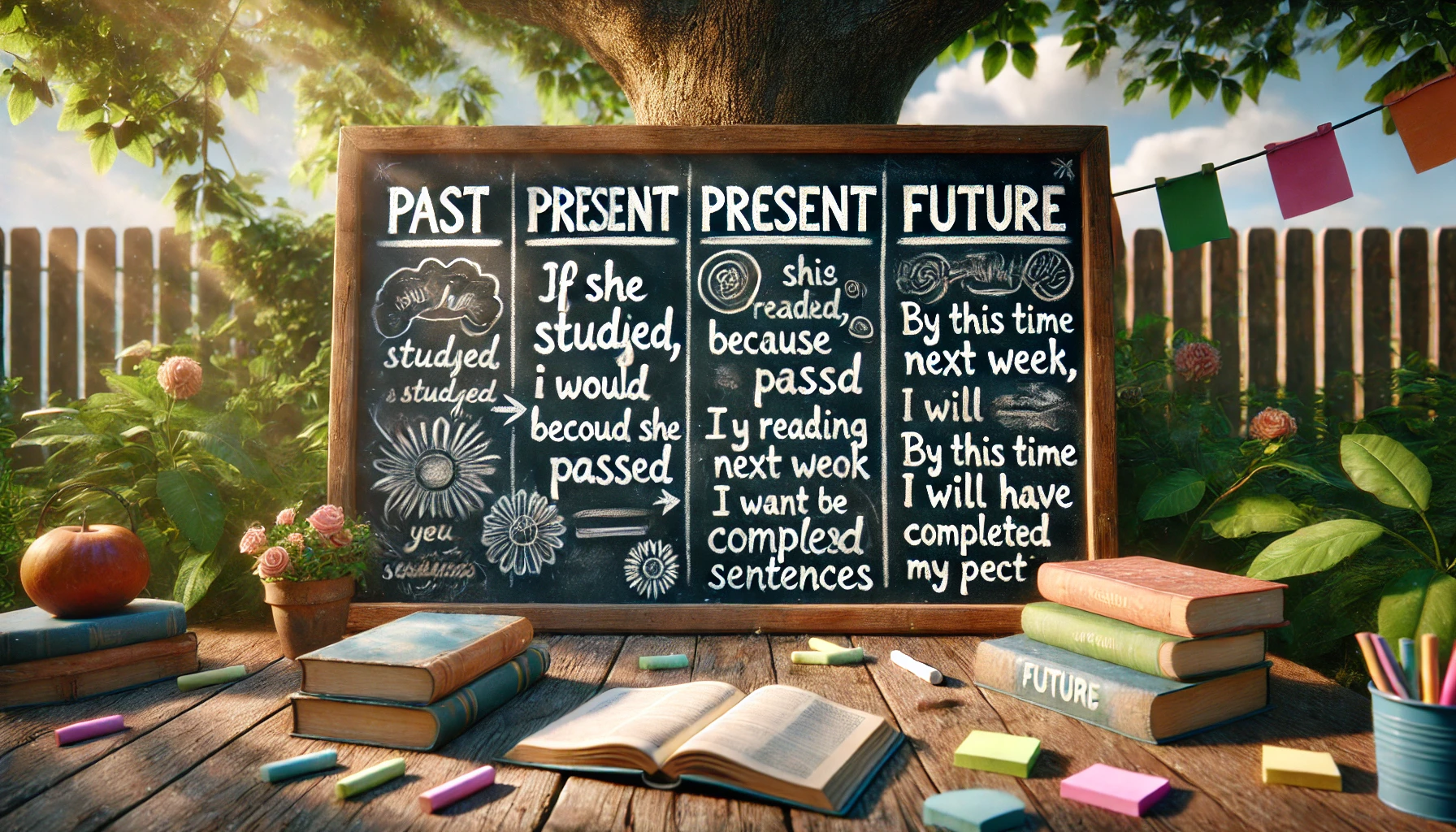Table of Contents
- 1. Introduction
- 2. Understanding the Basics of the Simple Past Tense
- 3. Common Uses of the Simple Past Tense
- 4. Rules for Forming the Simple Past Tense
- 5. Affirmative Sentences
- 6. Negative Sentences
- 7. Forming Questions in the Simple Past Tense
- 8. Real-World Examples
- 9. Common Errors and How to Avoid Them
- 10. Conclusion
1. Introduction
The Simple Past Tense is one of the most commonly used tenses in English, allowing speakers to describe actions or events that occurred in the past. Whether you’re sharing a story, reporting events, or discussing experiences, mastering the Simple Past Tense is essential for effective communication. In this article, we will explore its rules, uses, and practical applications to help you gain confidence in using it correctly.
2. Understanding the Basics of the Simple Past Tense
The Simple Past Tense is used to describe completed actions or events that happened at a specific time in the past. Unlike the Present Perfect Tense, the Simple Past Tense focuses solely on the action or event without emphasizing its relevance to the present moment.
Definition and Purpose
The Simple Past Tense is defined as a grammatical tense used to indicate actions or situations that began and ended in the past. Examples include:
- “I visited the museum yesterday.”
- “She finished her homework before dinner.”
Why Is It Important?
The Simple Past Tense is critical for recounting personal experiences, historical events, and everyday conversations. It provides clarity by specifying the time of the action and adds depth to your communication skills.
3. Common Uses of the Simple Past Tense
The Simple Past Tense serves various purposes in communication. Let’s explore its most common uses:
1. Describing Completed Actions
This is the primary use of the Simple Past Tense. It indicates actions that are fully completed in the past.
- “We watched a movie last night.”
- “He traveled to Japan last summer.”
2. Narrating Stories or Events
When telling stories or recounting events, the Simple Past Tense helps to establish the timeline of actions:
- “Once upon a time, there lived a brave knight.”
- “She arrived at the party and met her old friends.”
3. Discussing Historical Facts
Use the Simple Past Tense to state historical facts or events:
- “World War II ended in 1945.”
- “The Wright brothers invented the first airplane.”
4. Expressing Past Habits or Routines
The Simple Past Tense can describe habits or actions that were repeated in the past but no longer occur. Signal words like used to or always often accompany these sentences.
- “I used to play soccer after school.”
- “She always walked to work before buying a car.”
This use helps provide context about past behaviors or routines, making it easier to understand the speaker’s past experiences.
5. Talking About Specific Times in the Past
The Simple Past Tense is ideal for actions that occurred at a specific time, often indicated by phrases such as yesterday, last week, or in 2005. These time markers make it clear when the action took place.
- “They moved to New York in 2015.”
- “We attended the concert last Friday.”
4. Rules for Forming the Simple Past Tense
To form the Simple Past Tense, it’s important to understand the difference between regular and irregular verbs. Let’s break it down:
1. Regular Verbs
Regular verbs form the past tense by adding -ed to the base verb. Here are some examples:
- Walk → Walked: “She walked to the store.”
- Study → Studied: “He studied for his exams.”
2. Irregular Verbs
Irregular verbs do not follow the -ed rule. Instead, their past tense forms are unique and must be memorized. Examples include:
- Go → Went: “I went to the park.”
- Write → Wrote: “She wrote a letter.”
There are no specific rules for irregular verbs, so regular practice and exposure are key to mastering them.
5. Affirmative Sentences
Affirmative sentences in the Simple Past Tense follow a straightforward structure:
- Subject + Verb (in past form) + Object
Examples:
- “He visited the museum.”
- “They played basketball after school.”
- “I bought a new book yesterday.”
6. Negative Sentences
To form negative sentences in the Simple Past Tense, use did not (or didn’t) followed by the base verb.
Structure:
- Subject + did not + base verb + Object
Examples:
- “She did not eat breakfast.”
- “We didn’t watch the movie.”
- “He did not attend the meeting.”
7. Forming Questions in the Simple Past Tense
To ask questions in the Simple Past Tense, invert did and the subject, followed by the base verb.
Structure for Yes/No Questions:
- Did + Subject + base verb + Object?
Examples:
- “Did you visit the park?”
- “Did she finish her homework?”
Structure for Wh-Questions:
- Wh-word + did + Subject + base verb + Object?
Examples:
- “Where did they go on vacation?”
- “What did you eat for dinner?”
8. Real-World Examples
Here are some real-world scenarios where the Simple Past Tense is used effectively:
In Conversations
- “I watched a great movie last night.”
- “She called me to share the news.”
In Storytelling
- “He walked into the room and turned on the light.”
- “They explored the forest and found a hidden waterfall.”
9. Common Errors and How to Avoid Them
While using the Simple Past Tense, learners often make mistakes. Let’s address some common errors:
1. Using the Base Verb in Affirmative Sentences
Incorrect: “He go to the store.”
Correct: “He went to the store.”
2. Forgetting to Add -ed to Regular Verbs
Incorrect: “She walk to school.”
Correct: “She walked to school.”
3. Misplacing “Did” in Negative Sentences
Incorrect: “She didn’t went to the park.”
Correct: “She didn’t go to the park.”
10. Conclusion
The Simple Past Tense is an essential tool for effective communication, enabling you to discuss past events, share experiences, and narrate stories with clarity. By mastering its formation, uses, and nuances, you can enhance both your written and spoken English skills. Practice regularly and incorporate real-world examples to strengthen your understanding.
Start today, and soon, using the Simple Past Tense will become second nature!




